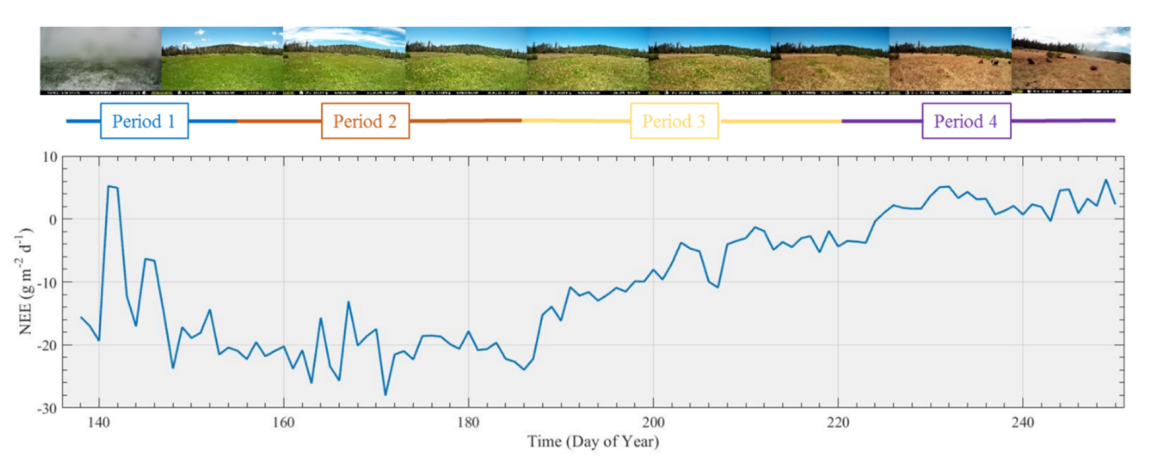Investigations of Carbon and Water Fluxes in a Sierra Nevada Meadow

Abstract
This study investigates the diurnal and seasonal surface-atmosphere exchanges of carbon dioxide (CO2), water and energy in a partly degraded Northern Sierra Nevada meadow. The eddy covariance technique was employed to quantify these exchanges in Loney Meadow (1822 m a.s.l.) for most of the annual snow-free period from May to September 2016. This meadow impacted by stream channel incision and is scheduled to undergo restoration work to raise the water table. The observed net ecosystem exchange (NEE) of CO2 showed that the ecosystem functioned as a strong sink throughout most of the study period sequestering an average of -18.51 gC m-2 d-1 during the peak of the growing season. The entire study period produced an average daily total NEE value of -7.71 gC m-2 d-1. The meadow progressed from a strong sink in the peak of the growing season (-18.51 gC m-2 d-1) to a weak source (2.97 gC m-2 d-1) following a decline in soil moisture. During daylight hours, photosynthetically active radiation (PAR) was shown to be the dominant driver of the CO2 flux with values ranging between -0.2 and -1.0 mgC m-2 s-1. At night, GPP shut down and the ecosystem functioned as a small source of CO2 with values ranging between 0.1 and 0.3 mgC m-2 s-1. At the seasonal scale soil moisture was shown to be a strong control on the CO2 exchange, which has important implications for understanding the impact of land management and climate change on meadow carbon budgets.